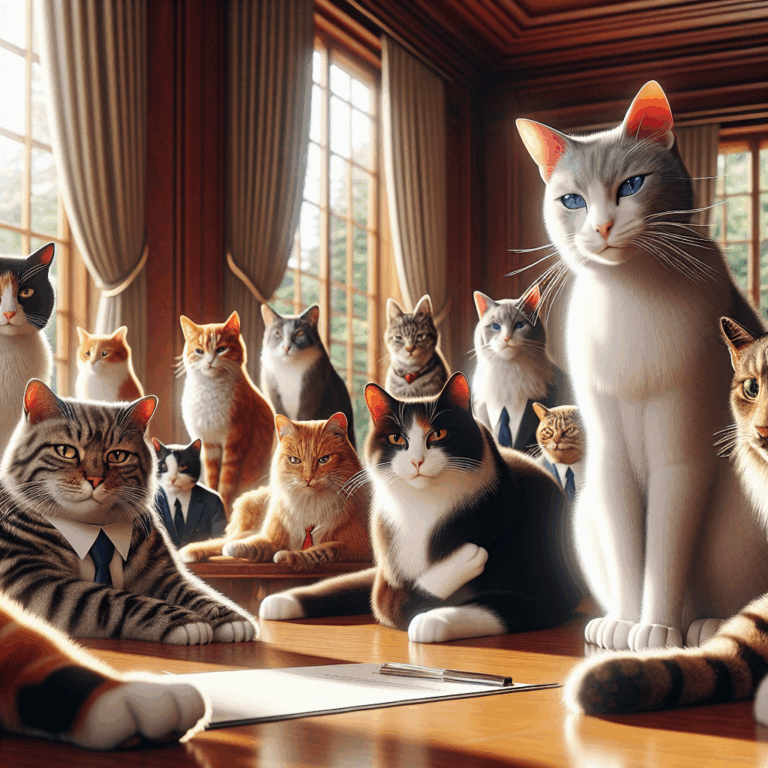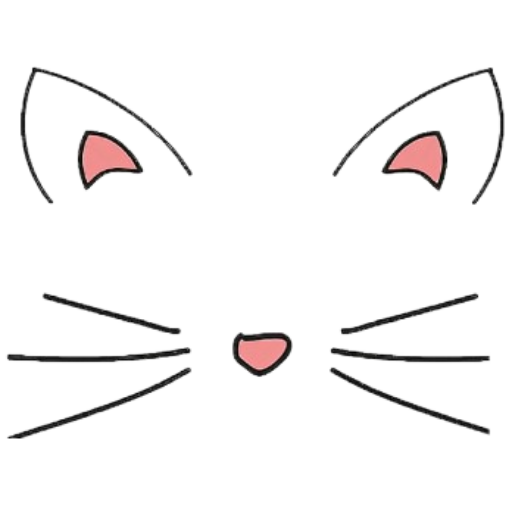The Feline Diplomats: Cats and Their Unseen Role in International Relations
- No Comments
In the realm of international relations, where diplomacy often centers around complex negotiations and strategic alliances, an unlikely participant has stealthily made its mark: the humble cat. While the image of a cat may not traditionally conjure thoughts of geopolitical maneuvering, these feline companions have quietly influenced the world stage in remarkable ways, leaving paw prints on history’s most significant diplomatic encounters.
The presence of cats in embassies and consulates around the world is a testament to their universal appeal and their ability to transcend cultural barriers. Many embassies have adopted official or unofficial feline mascots, whose charm and companionship have helped to soften the often rigid atmosphere of international diplomacy. Take, for example, Palmerston, the British Foreign Office cat, whose playful antics and photogenic presence have not only garnered a significant social media following but also brought a touch of warmth to the corridors of power.
Beyond their roles as mascots, cats have been known to play a part in facilitating diplomatic dialogue. In some cases, the shared affection for these creatures has served as an icebreaker between diplomats from different countries, helping to ease tensions and foster a spirit of camaraderie. It is not uncommon for visiting dignitaries to engage in light-hearted discussions about their own pets, paving the way for more serious conversations to follow.
Moreover, the presence of cats in diplomatic settings can serve as a reminder of shared humanity, transcending political differences. In regions where conflict has strained relations, the simple act of caring for a shared feline friend has sometimes been a catalyst for dialogue and understanding. This phenomenon is not merely anecdotal; historians have documented instances where cats have been present during pivotal moments in history, quietly observing as leaders debated the fate of nations.
Cats have also been featured in diplomatic gift exchanges, symbolizing goodwill and friendship. In 1964, a Siamese cat named Siam was presented by the Thai government to the United States as a gesture of cultural exchange, underscoring the role that these animals can play in bridging gaps between nations. Such gestures, while seemingly small, contribute to the fabric of international relations, creating bonds that endure beyond the political climate of the day.
The role of cats in diplomacy is not limited to formal settings. In cities across the globe, cats roam the streets, becoming unofficial ambassadors of their respective locales. Tourists and locals alike are drawn to these feline figures, who often become symbols of the cities they inhabit. In Istanbul, for instance, street cats are celebrated as part of the city’s cultural heritage, embodying a spirit of resilience and adaptability that resonates with both residents and visitors.
As international relations continue to evolve in an increasingly interconnected world, the role of cats as diplomats is likely to endure. Their presence in embassies, their influence in fostering dialogue, and their ability to transcend cultural divides make them invaluable participants in the delicate dance of diplomacy. While they may not sit at the negotiation table, their silent contributions remind us of the power of shared affection and the universal language of companionship.
In conclusion, while cats may not directly shape policy or draft treaties, their role in international relations is more significant than one might assume. Through their unique ability to connect people across cultures, these feline diplomats continue to play a subtle yet impactful role in shaping the world we live in. As we navigate the complexities of the global stage, let us not forget the small, quiet influence of the cats who have walked alongside us through history.

In the realm of international relations, where diplomacy often centers around complex negotiations and strategic alliances, an unlikely participant has stealthily made its mark: the humble cat. While the image of a cat may not traditionally conjure thoughts of geopolitical maneuvering, these feline companions have quietly influenced the world stage in remarkable ways, leaving paw prints on history’s most significant diplomatic encounters.
The presence of cats in embassies and consulates around the world is a testament to their universal appeal and their ability to transcend cultural barriers. Many embassies have adopted official or unofficial feline mascots, whose charm and companionship have helped to soften the often rigid atmosphere of international diplomacy. Take, for example, Palmerston, the British Foreign Office cat, whose playful antics and photogenic presence have not only garnered a significant social media following but also brought a touch of warmth to the corridors of power.
Beyond their roles as mascots, cats have been known to play a part in facilitating diplomatic dialogue. In some cases, the shared affection for these creatures has served as an icebreaker between diplomats from different countries, helping to ease tensions and foster a spirit of camaraderie. It is not uncommon for visiting dignitaries to engage in light-hearted discussions about their own pets, paving the way for more serious conversations to follow.
Moreover, the presence of cats in diplomatic settings can serve as a reminder of shared humanity, transcending political differences. In regions where conflict has strained relations, the simple act of caring for a shared feline friend has sometimes been a catalyst for dialogue and understanding. This phenomenon is not merely anecdotal; historians have documented instances where cats have been present during pivotal moments in history, quietly observing as leaders debated the fate of nations.
Cats have also been featured in diplomatic gift exchanges, symbolizing goodwill and friendship. In 1964, a Siamese cat named Siam was presented by the Thai government to the United States as a gesture of cultural exchange, underscoring the role that these animals can play in bridging gaps between nations. Such gestures, while seemingly small, contribute to the fabric of international relations, creating bonds that endure beyond the political climate of the day.
The role of cats in diplomacy is not limited to formal settings. In cities across the globe, cats roam the streets, becoming unofficial ambassadors of their respective locales. Tourists and locals alike are drawn to these feline figures, who often become symbols of the cities they inhabit. In Istanbul, for instance, street cats are celebrated as part of the city’s cultural heritage, embodying a spirit of resilience and adaptability that resonates with both residents and visitors.
As international relations continue to evolve in an increasingly interconnected world, the role of cats as diplomats is likely to endure. Their presence in embassies, their influence in fostering dialogue, and their ability to transcend cultural divides make them invaluable participants in the delicate dance of diplomacy. While they may not sit at the negotiation table, their silent contributions remind us of the power of shared affection and the universal language of companionship.
In conclusion, while cats may not directly shape policy or draft treaties, their role in international relations is more significant than one might assume. Through their unique ability to connect people across cultures, these feline diplomats continue to play a subtle yet impactful role in shaping the world we live in. As we navigate the complexities of the global stage, let us not forget the small, quiet influence of the cats who have walked alongside us through history.


